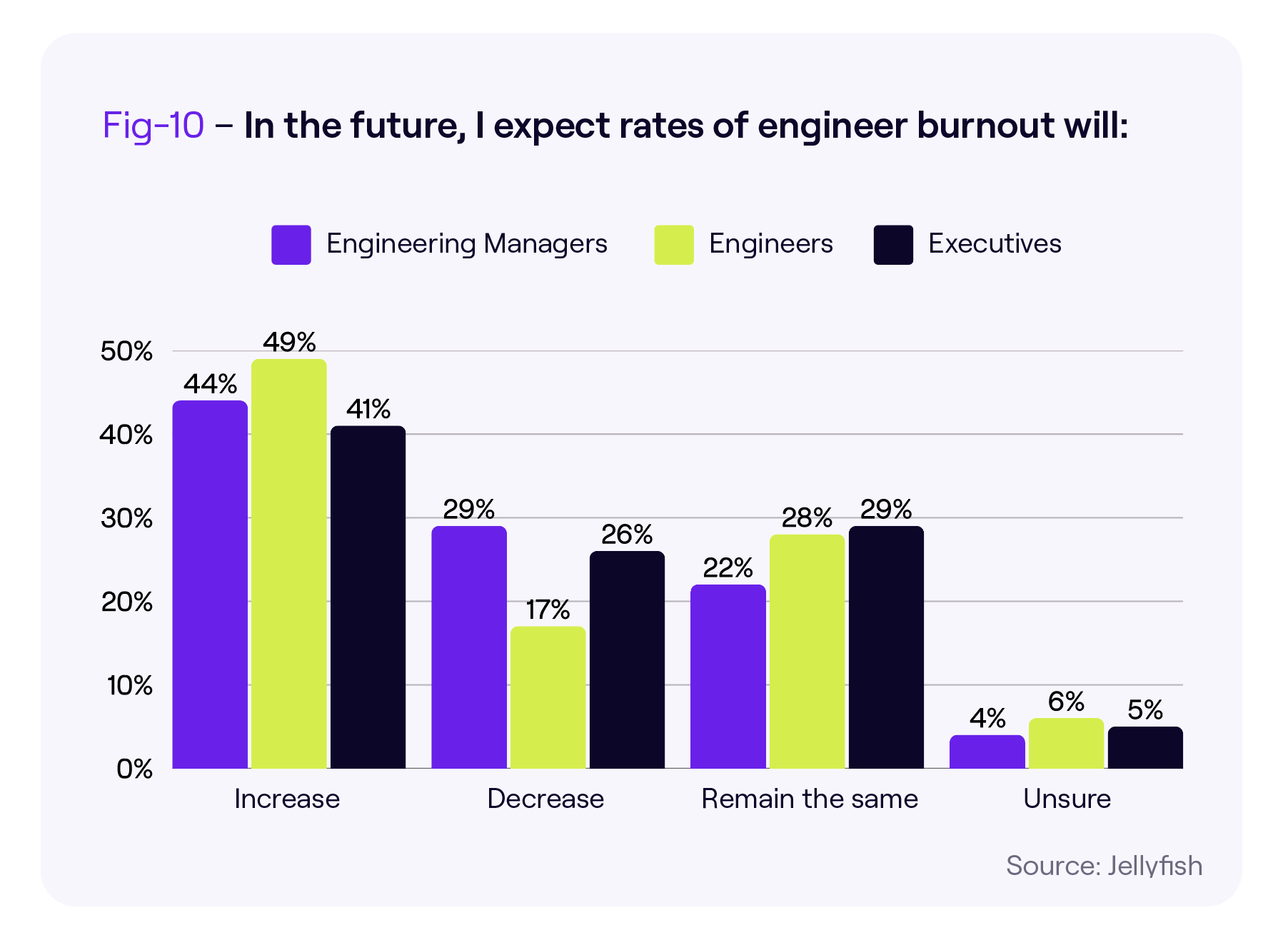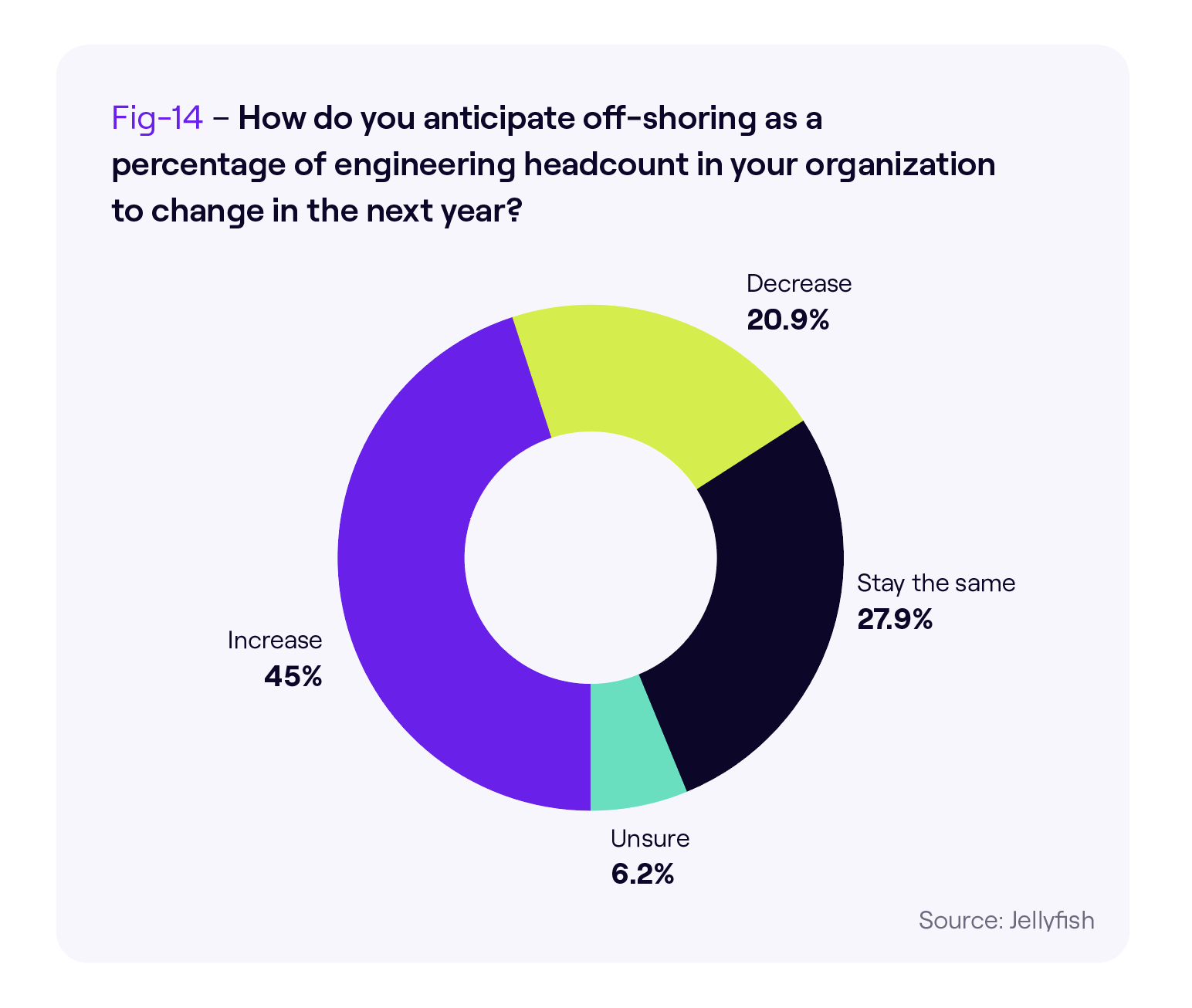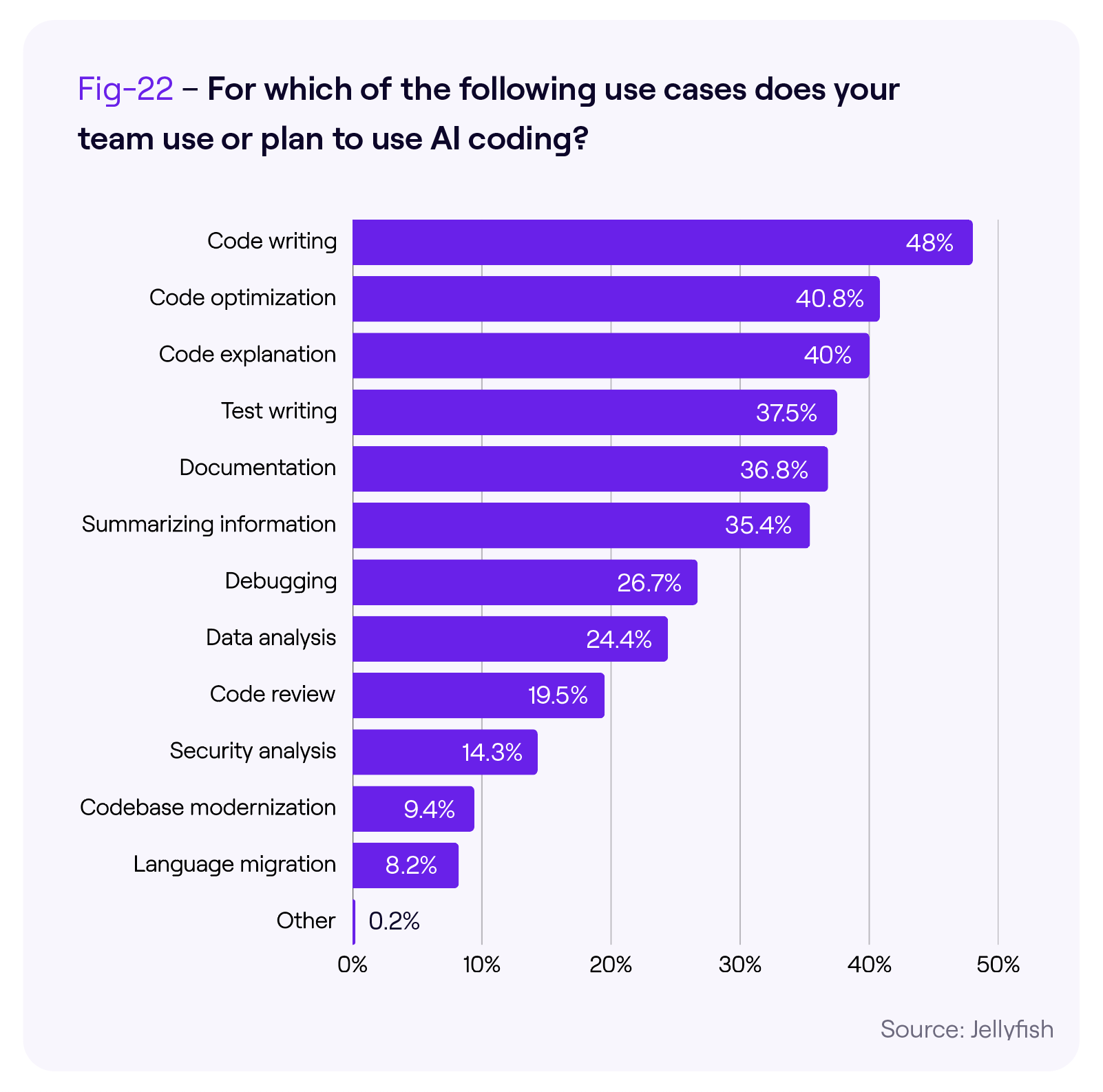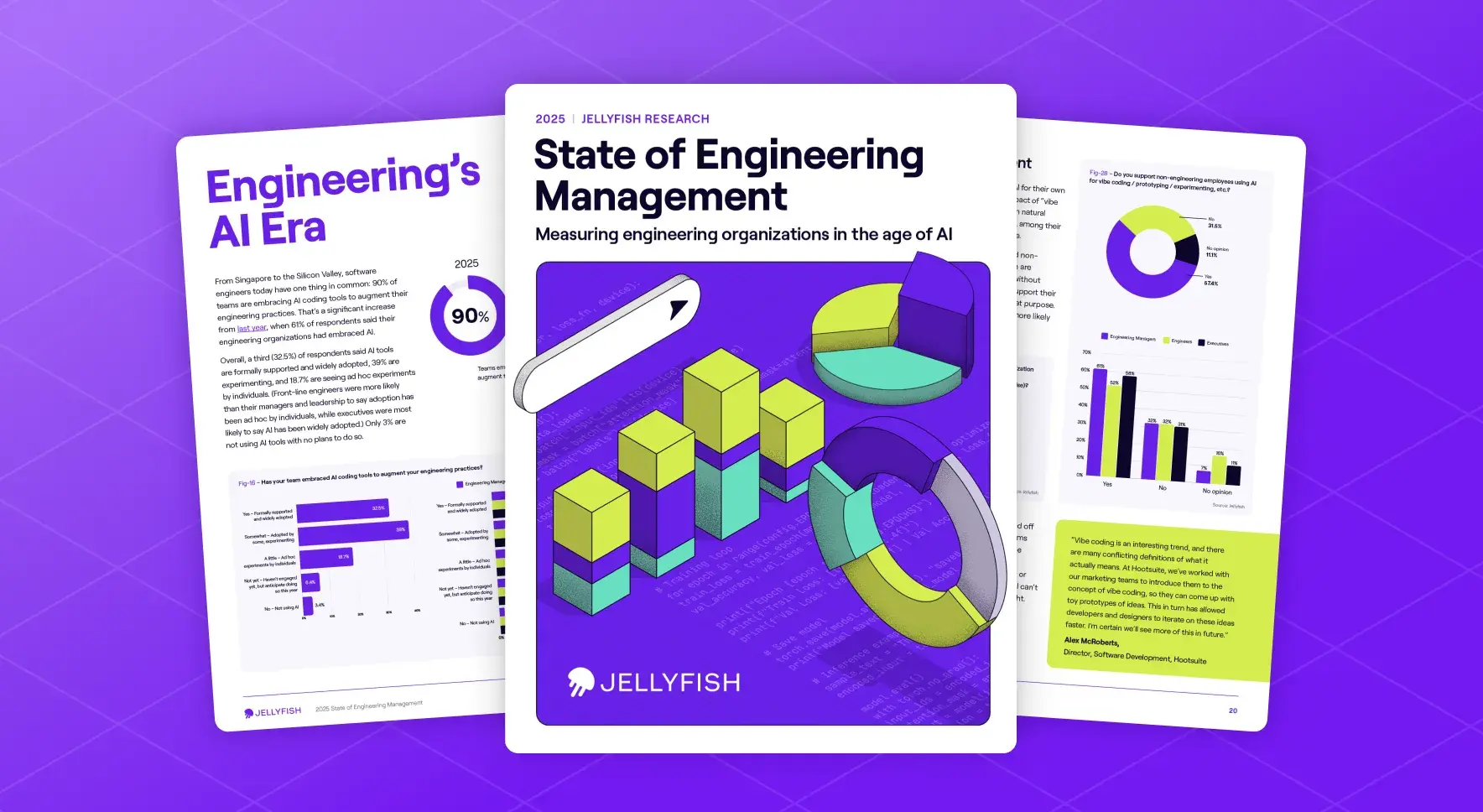The engineering landscape is constantly evolving, presenting new challenges and opportunities for managers. The recent Jellyfish State of Engineering Management report offers valuable insights into the current state of affairs, highlighting critical areas that demand attention from engineering leaders. Here are three key takeaways for engineering managers to consider:
1. Navigating Engineering Well-being and Productivity
Front-line engineers are facing increasing pressure, with concerns about resilience, especially amidst budget constraints, economic and political uncertainty, and the persistent burden of tech debt. Nearly 50% of engineers surveyed anticipated an increase in burnout due to the relentless push to “move fast” and “do more with less.”

What this means for EMs: Engineering managers need to proactively address these concerns to maintain a healthy and productive culture.
Considerations:
- Invest in Skill Development and Training: Empowering engineers with new skills can increase their confidence and efficiency, making them feel more equipped to handle challenges. Consider having proactive discussions with your engineers about which skills are needed to advance the team and how to best support them in their learning and growth goals. Examples of skill building can include AI/ML engineering to develop algorithms, robotic process automation to create and deploy bots, or even more expertise in foundational knowledge for big data and cloud technologies.
- Leverage Tooling to Improve Efficiency: Consider discussing tooling needs with your team to automate repetitive tasks and streamline workflows, freeing up your engineers for more impactful work. Examples could include test automation, configuration management tooling, and automated code reviews. Brainstorm how tooling improvements can remove process bottlenecks and where leveraging AI coding tools could help improve efficiency.
2. Adapting to Evolving Workforce Dynamics
2. Adapting to Evolving Workforce Dynamics
The report highlighted uncertainty in hiring and retention within the U.S., with some organizations expecting to expand headcount and others predicting growth to slow. However, the report indicated a noticeable trend towards increasing offshore headcount and exploring other cost-effective staffing options.

What this means for EMs: Engineering managers must be prepared for continued shifts in team composition and increasing geographical distribution.
Considerations:
- Best Practices for Working with Offshore Teams: Develop robust communication strategies and effective coordination methods to bridge time zone differences and ensure seamless collaboration, such as:
- Fostering a culture of trust and transparency by clearly defining roles and responsibilities, setting realistic expectations, and providing regular feedback.
- Prioritizing regular and structured communication, including scheduling dedicated meetings for updates, problem-solving, and team building with offshore counterparts. Encourage informal communication channels as well, like Slack, Teams, and email.
- Emphasizing clear documentation to ensure all processes, decisions, and technical specifications are well-documented and easily accessible to all team members, regardless of their location.
- Rethink Talent Acquisition and Retention Strategies: Given the hiring and retention challenges, managers may need to innovate in how they attract and retain talent, both domestically and internationally.
3. Embracing the Transformative Power of AI
3. Embracing the Transformative Power of AI
The perception and usage of AI coding tools are rapidly changing with increasing adoption of platforms like GitHub Copilot and Gemini Code Assist. Almost half of organizations are now utilizing more than one AI tool, primarily for tasks such as writing, optimizing, and explaining code, as well as test writing.

What this means for EMs: AI is no longer a niche tool; it’s an integral part of the engineering workflow.
Considerations:
- Coach Your Team to Leverage AI: Almost two-thirds of respondents reported that AI tooling was already boosting developer productivity, with most expecting this trend to accelerate over the next year. Discuss with your team how to better utilize AI coding tools, share best practices, and proactively coach late adopters so your team isn’t left behind.
- Think More Strategically about Time Allocation: By 2026, organizations anticipate spending more time on strategic roadmap work, thanks to AI assistance with KTLO (Keep the Lights On) and other maintenance tasks, freeing up engineers to focus on innovation and higher-value roadmap items. Analyze productivity gains with your team and start strategic conversations with your product counterparts early to discuss expected team capacity and how that can accelerate the roadmap.
By understanding and responding to these key trends, engineering managers can better navigate the complexities of today’s engineering landscape, foster resilient teams, adapt to global workforce changes, and strategically leverage AI to drive productivity and innovation.

2025 State of Engineering Management
Looking for more insights like these? Download the 2025 State of Engineering Management report now.
Read the ReportAbout the author

Tricia is a Senior Product Manager at Jellyfish.





